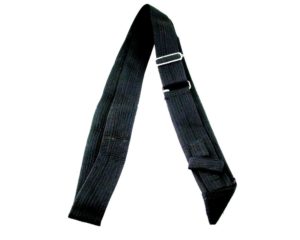Rescind Kirpan Ban in New South Wales, Australia urges WSO Canada
The use of a small Kirpan by a child in a school in Sydney, who has since been arrested and charged, has resulted in the New South Wales Premier and his education minister banning the wearing of Kirpans in schools. Sikhs bodies from the Shiromani Gurdwara Parbandhak Committee in Amritsar and the World Sikh Organisation in Canada have expressed concern at the ban and calling it a knee-jerk and misguided reaction, WSO has urged Premier Gladys Berejiklian to rescind the ban and not perpetuate negative stereotypes for students wearing articles of faith. WSN reports.
![The use of a small Kirpan by a child in a school in Sydney, who has since been arrested and charged, has resulted in the New South Wales Premier and his education minister banning the wearing of Kirpans in schools. Sikhs bodies from the Shiromani Gurdwara Parbandhak Committee in Amritsar and the World Sikh Organisation in Canada have expressed concern at the ban and calling it a knee-jerk and misguided reaction, WSO has urged Premier Gladys Berejiklian to rescind the […]](https://www.theworldsikhnews.com/wp-content/uploads/2021/05/Kirpan-360x266.jpg)
UNDOUBTEDLY, THE USE OF KIRPAN IN ANY SCHOOL can be upsetting to school authorities and parents of fellow students. However, let’s face that such incidents are not even one in a million. In recorded contemporary and ancient history, the use of Kirpan to avenge or perpetuate fear is unheard of.
In an urgent missive to NSW Premier Gladys Berejiklian and Education Minister Sarah Mitchell, the World Sikh Organisation has provided information and experts’ material that they have used in Canada and elsewhere to the Australian authorities and sought immediate rescinding of the ban, calling it discrimination against the Sikh community.
“While the incident that led to the announcement of this ban was highly unfortunate, the decision to ban the kirpan appears to be a knee-jerk reaction that is not based on an accurate understanding or facts about this article of faith.”

The WSO has offered the Canadian experience with respect to the accommodation of the kirpan as a successful model that can be used to develop a kirpan policy in NSW that balances students’ freedom to practice their faith and any safety concerns.
 The WSO letter to Premier Berejiklian noted the statement of NSW Education Minister Sarah Mitchell that “the kirpan would be banned in schools pending a policy review.”
The WSO letter to Premier Berejiklian noted the statement of NSW Education Minister Sarah Mitchell that “the kirpan would be banned in schools pending a policy review.”
“Given the significant Sikh population in NSW, we are concerned about the negative impact this will have on the community there.”
 Extolling on the significance of the Kirpan to a baptised Sikh, WSO President Tejinder Singh Sidhu has written that “the kirpan is a small sword that represents the duty to stand up against injustice. The word kirpan means grace and respect and the kirpan is worn by initiated (Amritdhari) Sikhs, both men and women, at all times. The kirpan is one of five articles of faith, often called the 5Ks. Sikhs wear them as a reminder of their commitment to the tenets of their faith including justice, charity, morality, humility, and equality.”
Extolling on the significance of the Kirpan to a baptised Sikh, WSO President Tejinder Singh Sidhu has written that “the kirpan is a small sword that represents the duty to stand up against injustice. The word kirpan means grace and respect and the kirpan is worn by initiated (Amritdhari) Sikhs, both men and women, at all times. The kirpan is one of five articles of faith, often called the 5Ks. Sikhs wear them as a reminder of their commitment to the tenets of their faith including justice, charity, morality, humility, and equality.”
“Kirpans must be made of iron or steel and most range in size from 15 to 22 cm (6-9 inches including handle). Some have elegant, ornate hilts and sheaths. They must be wrapped in fabric held securely in place with a fabric belt (called a gaatra). The gaatra is worn across the torso, keeping the kirpan next to the body.”
“The kirpan is worn as a spiritual article of faith and should not be seen as a ‘weapon’.”

Talking about the rare use of the Kirpan, the letter states, “What prevents Sikhs using an article of faith for violence is that very faith, coupled with the same social customs that we all observe. Of all the blades used in daily life, kirpans are the least hazardous because they are sacred: they come with a philosophy that is an integral part of how Sikhs practise their faith. It’s not just a talisman or a piece of jewellery. Removing the kirpan is a serious matter for Sikhs. It is done rarely and only under extreme circumstances – Sikhs even wear the kirpan while sleeping and bathing. Parting with this article of faith, even briefly, requires prayer.”
“What prevents Sikhs using an article of faith for violence is that very faith, coupled with the same social customs that we all observe..”
WSO as an advocacy group has been diligently pursuing the cases relating to Kirpan at various forums since the last decades in Canada and have thus offered expertise to ensure accommodation of the Kirpan in schools, institutions and other public places.

The letter says, “The accommodation of the kirpan in schools is an issue that has received intense legal scrutiny here in Canada and was the subject of significant jurisprudence. The matter was eventually heard by the Supreme Court of Canada in the Multani case (Singh-Multani c. Marguerite-Bourgeoys (Commission scolaire), 2006 SCC 6, 2006). In a unanimous decision, the Court ruled that the wearing of the kirpan must be accommodated in schools and that any assertion that the kirpan is a weapon is “contradicted by the evidence regarding the symbolic nature of the kirpan, it is also disrespectful to believers in the Sikh religion and does not take into account Canadian values based on multiculturalism.”
 “The kirpan is permitted in schools across Canada. Students may wear kirpans of a length of up to 7.5 inches underneath their clothing, secured in the sheath and further restrained in a gaatra belt. This accommodation allows Sikh students to freely practice their faith while also limiting any safety issues that may arise. This accommodation has been successfully applied for many years without incident.”
“The kirpan is permitted in schools across Canada. Students may wear kirpans of a length of up to 7.5 inches underneath their clothing, secured in the sheath and further restrained in a gaatra belt. This accommodation allows Sikh students to freely practice their faith while also limiting any safety issues that may arise. This accommodation has been successfully applied for many years without incident.”
 It needs to be thoroughly explored as to what extent was the child being bullied and an understanding of the background of his unfortunate action. The ban rhetoric will lead to ignorance, discrimination and xenophobia, against a highly visible minority, warned WSO President Sidhu. WSO has offered advice and consultation based on the Canadian precedent.
It needs to be thoroughly explored as to what extent was the child being bullied and an understanding of the background of his unfortunate action. The ban rhetoric will lead to ignorance, discrimination and xenophobia, against a highly visible minority, warned WSO President Sidhu. WSO has offered advice and consultation based on the Canadian precedent.
Australia has seen the visible Sikh community rise in numbers over the decades. Governments and administrations have to understand the nuance of the people who have made their country their homes and have become citizens. Any such discrimination would be trampling of the religious rights and human rights of distinct communities.
